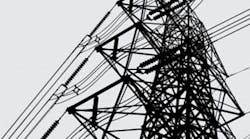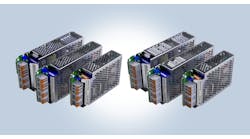For instance, Richard Anderson, senior automation specialist at Solid State Automation and Controls (http://solidstateautomation.com) in Houston, Texas, reports in a whitepaper, "How to Develop Cost-Effective, Ruggedized, Skid-Based Applications for Remote Deployments," that SSAC recently designed and built a viscosity-reducing, skid-based, oil-mixing system for an unmanned production platform in the Gulf of Mexico, and employed Siemens Industry's Siplus S7-1200 PLCs, ET200M I/O modules, MP377 HMIs and two power supplies in an explosion-proof, NEMA 7 enclosure and intrinsically safe track pad.
Also Read: Power Supplies Take Sophisticated Paths
The two power supplies consist of two Sitop units, both capable of 24 Vdc and 120 Vac with a redundancy module between them. They support and maintain high availability on the skid's equally redundant PLCs, which pull data from a flow sensor, and use 4-40 mA analog wiring, HART, Profibus and Profinet communications protocols and Siemens' Scalance wireless modules to transmit it to the user's onshore DCS. Likewise, S7-1200 PLCs can also use Modbus RTU and Modbus TCP for communicating between legacy RS-232 and RS-485 systems and industrial Ethernet, while Sitop 1600 DC uninterruptible power supplies have two Ethernet ports for integrating with Profinet and reporting to users' higher-level networks. The whitepaper is available here.
[pullquote]
I'd add not to take my word that power supplies are getting smarter, but I can't because when I researched this topic, I ran across two articles I wrote on it last year and the year before. In the earlier article, "Power Supplies Take Sophisticated Paths", Roolf Wessels, business unit manager for monitoring and protection at Pepperl+Fuchs, said, "Power supplies have always been a bit of a stepchild compared to other process control devices, but users are recognizing that power is the most critical element in their applications. You can lose a few I/O points and networking nodes and still run an application, but losing power means losing your whole application, so it's worthwhile investing in high-reliability, high-efficiency power. As a result, users want more diagnostics in their power supplies. They already have diagnostics for predictive maintenance and asset management in their controllers and field devices, and now they want it them their power supplies, too."
In the more recent article, "Power Supplies Get in on the Reliability Act", Mike Garrick, power supply manager at Phoenix Contact, added, "Applications become more robust when a power supply can report when its connected field devices are drawing too much current, while the integrity of the DC bus is intact. For example, if the system is designed for 10 amps, it's become a reasonable expectation for the power supply to provide a signal to the process controller when the load starts to draw more than 10 amps. This signal is an early warning that the load is drawing too much current, and maintenance should be scheduled. When this early warning is received, the controller knows the process is running at the proper voltage at a current beyond the nominal rating of the supply. The reason for this could be a field device that's getting old and requires service."





